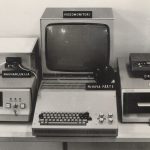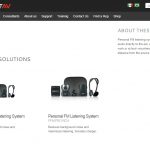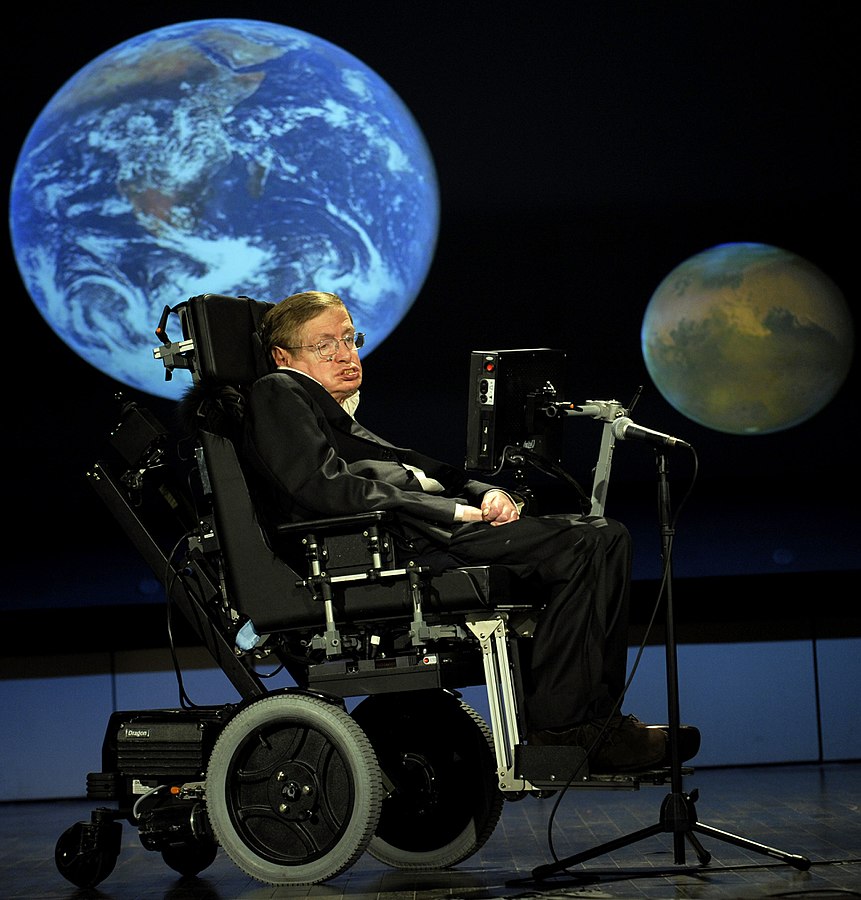
A world-famous user of AAC!
Image courtesy of NASA
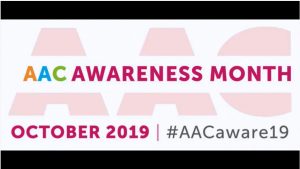
“Communication Beyond Borders,” the 2019 theme, means full inclusion, communication for all
Assistive technology makes everyday tasks accessible to persons with a disability. Augmentative and alternative communication (AAC) enables people who cannot express their thoughts or needs verbally out loud to do so with the assistance of technology. AAC devices go back to 1960, when Reg Maling built a prototype of an electronic communication aid in the form of a sip-and-puff typewriter. The device displayed a set of symbols on an illuminated display. From the International Society for Augmentative and Alternative Communication (ISAAC): October is International AAC Awareness Month; the theme for 2019 is Dare to Lead.
According to the American Speech-Language-Hearing Association (ASHA), persons who use AAC devices fall into two broad categories: congenital and acquired disabilities. Paring an individual with an AAC device requires close attention to that person’s disability and needs (and these can change over time). In some cases, the user may need an AAC system, “an integrated group of components that enhance communication.” AAC comes in two forms, unaided and aided. Unaided AAC systems do not require an external tool. Aided AAC, on the other hand, includes a device, electronic or non-electronic. Low-tech solutions include picture symbols, word cards, and communication boards. High-tech solutions range from single-message devices to complex communication software and hardware. People older and younger alike can use AAC! And AAC can include devices such as screen readers, applications that “read” computer text aloud for blind people. One example is JAWS, which has made tremendous differences in the lives of many of our clients, as Maddy and Val can attest.
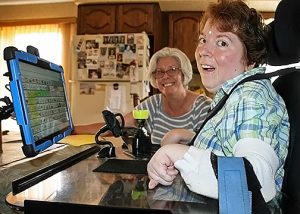
Tess C. relishes the new words and phrases she has learned on her new communication device, while Karren Gliniecki, Augmentative Communication
Specialist and speech-language pathologist in the Assistive Technology Services department.
Communication Beyond Borders, the notion that communication must include all, encompasses best practices that include the following:
- Presume the person’s competence. There is no need to prompt every message.
- Assume the usual communication etiquette, including allowing the person time to speak.
- Allow a student to time explore his device.
- Respect the AAC device as the person’s property; taking it away because she does not appear to be cooperating is akin to taking away her voice.
- Allow the user’s access to his words at all times. Use color coding, as needed.
- Ensure vocabulary includes core words, including verbs and adjectives, not just nouns.
- Ask open-ended question, allowing her time to respond.

Tess L. uses eye-gaze AAC technology to communicate with her parents and in school.

